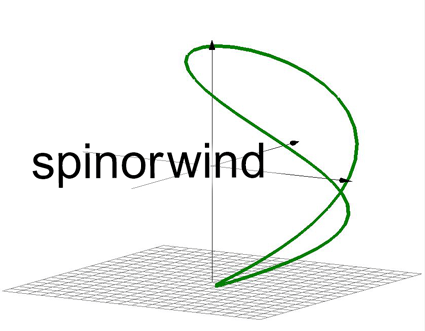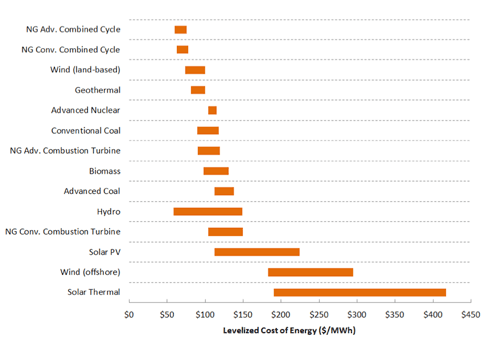
More wind- more of the time:
Windmills have powered grinding stones and water pumps for thousands of years. With the invention of electric motors in the late 1800's, many windmills were almost immediately converted into generators, powering everything from early battery operated cars to charging electric fences on distant farms.
In the last 25 years- with the advent of new materials, smart transmissions and a motivated global engineering effort focused on wind energy, costs have plummeted as efficiencies have risen. Today, wind power is comparable in price with coal or natural gas, and, if the full cost of CO2 is included, clearly superior.

Source: EIA, Levelized Cost of New Generation Resources in the Annual Energy Outlook 2013
Modern wind turbine blades are essentially airplane wings more than 150 foot (50m) long, mounted on top of a 30 story "skyscraper". They rely on aerodynamic lift to capture as much energy as possible out of thin air. Their amazing efficiency- almost 80% of theoretical maximum and more than 98% uptime performance, would appear to leave little room for improvement. Just as importantly their capital efficiency is high, due to improvements in generators, blade lifetimes and operational excellence.
But high efficiency has its downside- lower performance in turbulent or fluctuating wind conditions, where the blade can stall or bend non-uniformly. Anything the ruins the blade's performance directly impacts the viability of wind power generation. Reducing the effect of turbulence, bug splats, and ice could increase this capacity by at least 5%, and perhaps as high as 15%.
If wind power is to continue growing in market share, it will have to maintain its cost performance in poorer wind sites.
Drag-style wind turbines are half (or less) efficient than lift-blade designs in smooth air, but superior in turbulent conditions. Unfortunately, these designs are often mechanically complex and impossible to scale to tens of meters in diameter- the only dimensions where capital and operating costs are attractive.
So the motivation behind Spinorwind is to straddle the gap between drag and lift wind turbines. To operate efficiently in a broader range of real-world conditions. To increase the return-on-capital and to expand the diversity of tower sites where wind is economical.
See our technology page for more details.
Copyright
Genuine Ideas, LLC.
